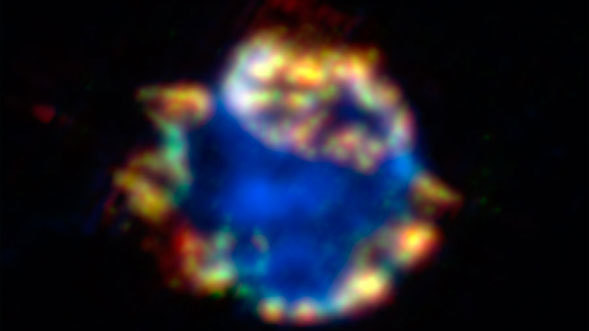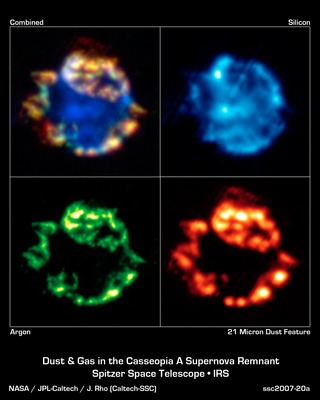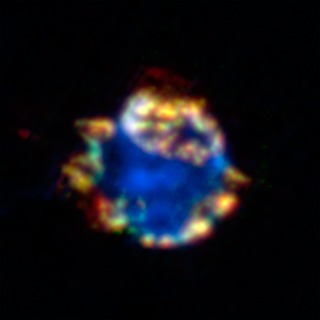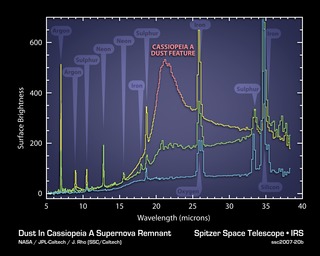
Credit: NASA/JPL-Caltech/J. Rho (Caltech-SSC)
Observation • December 20th, 2007 • ssc2007-20b
ssc2007-20b
This beautiful bulb might look like a Christmas ornament but it is the blown-out remains of a stellar explosion, or supernova. The remains, called Cassiopeia A, are shown here in an infrared composite from NASA's Spitzer Space Telescope. Silicon gas is blue and argon gas is green, while red represents about 10,000 Earth masses worth of dust. Yellow shows areas where red and green overlap.
The fact that the red and green do overlap indicates that this supernova is synthesizing dust and gas together. This is the smoking gun indicating that supernovae were significant suppliers of fresh dust in the very early universe -- something that was hard to demonstrate prior to the Spitzer observations.
The data for these images were taken by Spitzer's infrared spectrograph, which splits light apart to reveal the fingerprints of molecules and elements. In total, Spitzer collected separate "spectra" at more than 1,700 positions across Cassiopeia A. Astronomers then created maps from this massive grid of data, showing the remnant in a multitude of infrared colors.
About the Object
- Name
- Cassiopeia A • Cas A
- Type
- Nebula > Type > Supernova Remnant
- Distance
- 11,000 Light Years
Color Mapping
| Band | Wavelength | Telescope |
| Infrared | Spitzer IRS | |
| Infrared | Spitzer IRS | |
| Infrared | Spitzer IRS |
Astrometrics
- Position (J2000)
- RA =23h 23m 25.7s
- Dec = 58° 49' 12.9"
- Field of View
- 8.0 x 8.0 arcminutes
- Orientation
- North is 0.2° left of vertical










